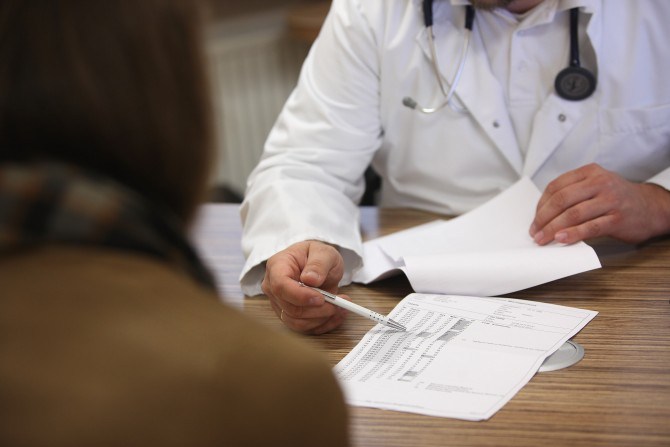Many latest and advanced clinical trials are underway all around the country and world, studying drugs, devices or other treatments for the pain of fibromyalgia and other symptoms. This gives men and women more privilege than what is conventionally arbitrated by a doctor during a visit.
Why should clinical trial be tried?
- Some trials sustain recoupment.
- A fibromyalgia clinical trial can grapple to turn for probable leading edge to new treatments and care from board-casted medical doctors.
- There is no allegation and you don’t need comprehensive medicare.
- Your health is kept on an eye during and likely after a specific period of time or trial.
- Research done in the field of fibromyalgia and the information gained through it may help the patients with symptoms of fibromyalgia in the future.
- There are many types of clinical trials. Not all clinical trials are drug-based. Some trials include additional and substitute medicine or medicinal devices;
- Some include exercise.
- Others supervise pain and emotions.
- A trial may also involve an inoculation of new analgesics.
- Some clinical trials are lofted to ascertain ways to recognize preclude and diagnose different chronic pain conditions such as fibromyalgia.
Hence, there are a lot of options or ways to choose from.
For many people, just having fibromyalgia and being over the age of 18 makes them a good candidate for a trial. Each trial is different, though. Some clinical trials exclude participants for several reasons, such as taking other medications, being pregnant, or having other health conditions (e.g., a heart condition). The first thing is to find the one that is right for you.
How to Find Clinical Trials for Fibromyalgia
Center Watch and ClinicalTrials.gov are the two excellent websites to start the research. There’s also Research Match, which does the burrowing for you.
For two decades, Center Watch has been around and boasts “the largest online database of industry-sponsored global clinical trials actively seeking volunteers.” The good thing is that you can filter results by the phase of the trial and by location. Age and gender can be added to make sure you fit in the inclusion criteria. You can also sign up for email alerts when new clinical trials post.
There is a website that is part of the National Institutes of health, ClinicalTrials.gov. all kind of studies is in this government-run site. Currently, there are clinical trials for acupuncture, dance therapy, medical devices, and more, in addition to drugs.
All your work is done by Research Match and it also matches you with other researchers looking for clinical trial volunteers. When you sign up, you’ll have access to studies from 128 institutions. After you register, all you have to do is wait to be contacted about open opportunities.
Click Here to Visit the Store and find Much More….
Steps to start a Clinical Trial
Firstly if you are thinking about taking a part in a clinical trial than you must first need to know what phase trail you are interested in.
Phase I (Safety)
The foremost important and first step in a clinical trial is safety. Only a small group of people are selected and it usually lasts for a few months. The one who participates for will be paid according to the period of time of work. You may get access to leading-edge treatments and therapies. In the first phase, the research workers are looking to see how the drug or medicine acts in the human body and the most important part of this is safe access.
Phase II (Effectiveness)
This phase of clinical trial lasts up to two months. In a few hundred people, the drug, device or treatment program is usually tested with a placebo drug or customary treatment. Some of the people in this phase get the real treatment to their problem and some don’t get it; they may get a placebo and it may be impossible to know which one you are getting through the trial. Even the researchers may not be privy to that information revealed through the clinical trial
Phase III (Benefits and adverse side effects)
At this phase, just as in phase II, you may get the drug, device or treatment program or a placebo/ customary treatment. Large groups of people are studied; you can say hundreds to thousands and the drug or device or treatment has already been studied now for quite some time. The next step in this phase is FDA approval for marketing and sale and the trial can last for several years.
Phase IV (drug or devices already in the market)
Several thousand people participate in this phase. Free access to the treatment already on the market is the most common advantage in phase IV. In this phase, people would not get something new but something that has been pretty well studied. At this stage, the drug, device or treatment will likely to be compared to another treatment. Some shareholders will get one drug or treatment and others will get a competing drug or treatment. Long-term safety and adequacy is studied
Five important Steps to Clinical Trial Entry
Those persons who are interested in exploring new treatments for fibromyalgia should start by taking these five basic steps:
- Search Center Watch and Clinical Trials.gov for trials you may be interested in and register with research match.
- Decide what phase trials you want to apply for work.
- Firstly look at where the clinical trials are being conducted and find the conclusion that can you easily travel to the designated location to receive treatment? Is it I your region? Is it in your access?
- Find out about inclusion or exclusion criteria for the trial |(age, gender, pregnancy, health conditions, etc). Find the trials you are qualified for.
- Contact the researchers (usually by email or phone) for trials you are interested in. contact information is listed with the clinical trials details.
Clinical trials are the marvelous ways to get new, better and advanced treatment for fibromyalgia. With one caution, however: despite how much a drug or device has been studied. There can still be side effects and adverse events. In some cases, even life-threatening events.
At the similar time, there can be benefits that can exceed your current treatment. We should weigh or compare the risks with benefits and always involve your doctor with your decision.


